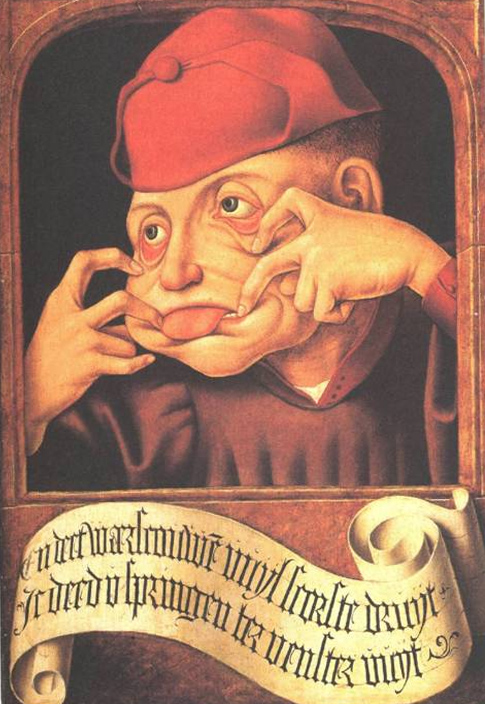On the eve of the World Gurning Championships, contested next Saturday at the Egremont Crab Fair in Cumbria, this week’s picture is an early sixteenth-century Flemish painting of a man pulling a silly face. The identity of the artist responsible is unknown. So too is that of his subject, the red-capped, red-eyed gentleman with pink protruding tongue and features twisted into a jeering grimace. He is perhaps no one in particular but, rather, the generic image of the fool, whose function it is to mock men out of their pomposity and to bring them, laughing, back down to earth.
According to the Oxford English Dictionary “gurn” or “girn” was originally a dialect variant of the word “grin” which subsequently acquired the meanings “to snarl as a dog” and “to grimace or pull a face” (the Elizabethan playwright John Marston’s Antonio’s Revenge contains the powerfully suggestive line, “When thou dost girn thy rusty face doth look like a roasted rabbit”). The current President of the Egremont Crab Fair, Mr Alan Clements, tells me that competitive gurning has a long history in Cumbria. “The Crab Fair itself goes back to 1267, when the Lord of the Manor received a royal charter to hold a three-day harvest festival. There used to be a great market and part of the celebration became the mockery of a village idiot. They used to make a fool of him and he would growl like a dog and make funny faces. It’s said that the idea of a gurning competition grew out of that. Whether it’s really true I couldn’t say.”
There is certainly an ancient tradition of festival tomfoolery which may help to throw light both on Cumbrian gurning and on the picture reproduced on this page. In ancient Rome the feast day of Saturn...


